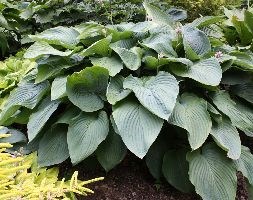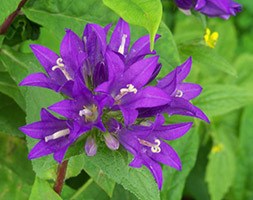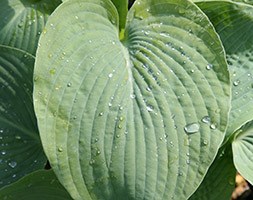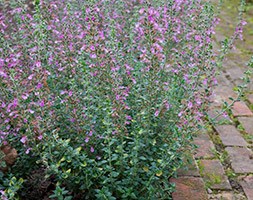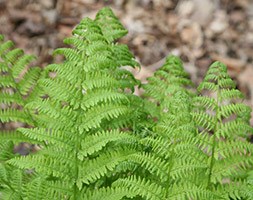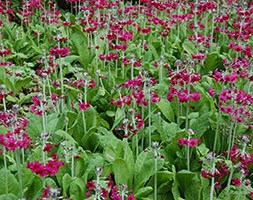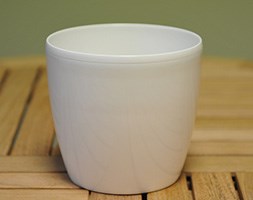New products at Crocus
by Sarah - February 6th, 2016.Filed under: Crocus, New Products.
Crocus just added these new products
Iris chrysographes (Siberian iris) £7.99
Position: full sun or partial shade Soil: moist but freely draining, moderately fertile soil Rate of growth: average Flowering period: May and June Hardiness: fully hardy Stunning flowers with velvet-like petals that range in colour from deep claret-purple to near black, appear on upright stems from early summer above strappy, grey-green leaves. This clump-forming beardless Siberian iris prefers soils that have a reliable source of water in summer, so will make an eyecatcatching feature beside a pond. Garden care: Plant in soil that has been improved with well-rotted manure or garden compost and do not allow to dry out, particularly as the plant is getting established. If planted in a container, it will need dividing and repotting every couple of years in spring.
Hosta ‘Empress Wu’ (PBR) (plantain lily) £6.99
Position: partial or full shade Soil: fertile, moist, well-drained soil Rate of growth: average to fast-growing Flowering period: July Hardiness: fully hardy One of the largest of the hostas, the green leaves of ‘Empress Wu’ can grow up to a whopping 45cm long. Not only are they big, but their deep veining gives them a wonderful corrugated texture that makes them a stand-out feature in tropical or woodland-themed planting schemes. To top it all off, in early to midsummer, the generous mound of foliage is crowned with sprays of soft violet flowers. Garden care: You’ll get thicker, lusher leaves if you give your hostas a really good feed. An annual mulch in spring or autumn will help to keep the weeds down and is an easy way to improve soil and boost nutrient levels. Add a generous mulch of about 5-10cm (2-4in) deep of garden compost or leaf mould around the plant. Spraying the leaves regularly with a high nitrogen fertiliser during the growing season will also help to boost leaf size. Slugs and snails love hostas, so you will need to protect against them. Use an organic nematode treatment in early spring to ward off slugs. Water your hostas well as soon as you plant them and from then on water regularly during their first growing season. Give them a water about once or twice a week around the base of the plant, avoiding the leaves. Little and often can be disatrous as it encourages the plant to produce roots closer to the surface in a desperate quest for moisture.
Campanula glomerata ‘Superba’ (clustered bellflower) £6.99
Position: full sun or partial shade Soil: fertile, moist, well-drained, neutral to alkaline soil Rate of growth: fast-growing Flowering period: June to July Hardiness: fully hardy Dense heads of large, rich purple, bell-shaped flowers appear from June to August on tall stems that rise above rosettes of oval, mid-green leaves. This beautiful bellflower is perfect for a sunny, cottage-style or herbaceous border and is equally happy in partial shade. Garden care: Avoid planting out seedlings until all threat of frost has passed. During the growing season water freely and apply a balanced liquid fertiliser each month. Cut back after flowering, both to prevent self-seeding and to encourage a second flush of flowers.
Hosta sieboldiana var. elegans (plantain lily) £6.99
Position: partial or full shade Soil: fertile, moist, well-drained soil Rate of growth: average Flowering period: July and August Hardiness: fully hardy Huge, sculptural, corrugated grey-blue leaves are topped with spikes of trumpet- shaped flowers of the palest lilac in July and August. When the plant has finis hed flowering, the seed pods split into tiny, star-like segments. The striking leaves of this plaintain lily make a dramatic full stop at a woodland edge, whe re they contrast beautifully with ferns and other foliage plants. Once establis hed, its layers of leaves will suppress weeds, too. Garden care: You’ll get thicker, lusher leaves if you give your hostas a really good feed. An annual mulch in spring or autumn will help to keep the weeds down and is an easy way to improve soil and boost nutrient levels. Add a generous mulch of about 5-10cm (2-4in) deep of garden compost or leaf mould around the plant. Spraying the leaves regularly with a high nitrogen fertiliser during the growing season will also help to boost leaf size. Slugs and snails love hostas, so you will need to protect against them. Use an organic nematode treatment in early spring to ward off slugs. Or simply stick to planting it in a container.
Teucrium x lucidrys (hedge germander) £6.99
Position: full sun Soil: well-drained, preferably neutral to alkaline soil Rate of growth: average Flowering period: July to September Hardiness: fully hardy Perfect for lining a pathway or fronting a border, this evergreen perennial has woody stems that are clothed in small deep green leaves, which emit a spicy aroma when they are brushed past or gently bruised. From midsummer onwards clusters of small pink flowers form towards the top of the stems, each with a prominent lip. Popular in low parterre planting, it is now used extensively in the Kitchen Garden at Highgrove, where it has replaced much of the box hedging. Garden care: Clip in early spring and avoid excessive winter wet.
Dryopteris affinis ‘Cristata’ (golden male fern (syn. The King)) £6.99
Position: partial shade Soil: moist, humus-rich soil Rate of growth: slow-growing Hardiness: fully hardy A cultivar of the native male fern, Dryopteris affinis, found in woodlands in wetter parts of Britain, this is a handsome, shuttlecock fern that keeps its leaves almost all year round. The young fronds unfurl a golden green and the plant retains a fresh, bright appearance throughout the summer. Try it in a moist shady border with other woodland plants. Garden care: Incorporate lots of well-rotted leaf mould, composted pine needles or garden compost into the planting hole. Cut back decayed fronds in winter to allow new growth to emerge.
Primula pulverulenta (primrose) £6.99
Position: partial shade Soil: moist, humus-rich, neutral to acid soil Rate of growth: average Flowering period: May to June Hardiness: fully hardy Forming in tiers on the upright, white-dusted stems in late spring and early summer, the flowers of this moisture-loving perennial are normally a deep reddish purple, with a dark-red or purple eye. A generous drift of this striking candelabra primula looks great in the dappled shade of a woodland garden, and given the right conditions they are easy-to-grow. Garden care: Divide large clumps after the plant has flowered, preferably during a wet spell.
White round pot cover £2.99
This stylish pot will bring elegance into the home. Perfectly suited to enhance any plant it is matched with, this pot is a real all rounder. As it does not have drainage holes in the bottom, it can be placed directly onto a surface without having to worry about leaking water. This pot comes in a range of colours, all varieties sold seperately. Measurements: Diameter: 14cm Height: 12.6cm Diameter: 16cm Height: 14.6cm Diameter: 18cm Height: 16.7cm








